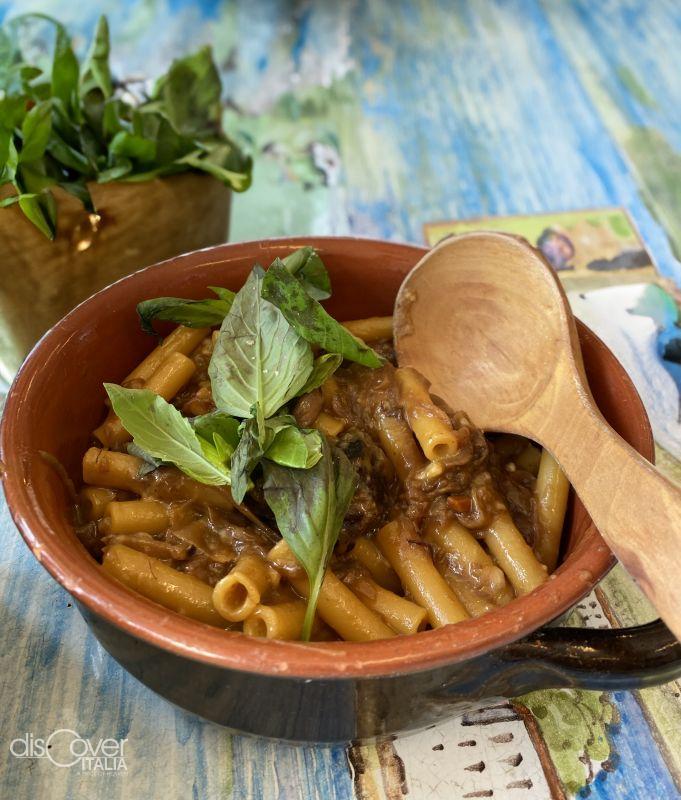How much it actually had to do, at least originally, with the city to which the name connects it, is unclear. Certainly, the "Genovese" is one of the most characteristic dishes of Neapolitan cuisine and one of the most frequent presences in holiday lunches.
 The protagonist is the onion, not just any, but preferably the coppery one from Montoro, a typical Irpinian product with the PGI mark. Then there is the meat, usually beef, a choice of lacierto, colarda or shin muscle, even if the nobles once preferred veal.
The protagonist is the onion, not just any, but preferably the coppery one from Montoro, a typical Irpinian product with the PGI mark. Then there is the meat, usually beef, a choice of lacierto, colarda or shin muscle, even if the nobles once preferred veal.
The onion reigns supreme due to its large quantity, which gives aroma and consistency to the dish. Finely chopped, with the addition of carrots, bay leaves, parsley, a handful of cherry tomatoes or a teaspoon of tomato paste and, to complete the succulent base, pieces of salami or ham, it must cook for a long time, "pippiare" very slowly with the help of white wine, until the onion and its cooking companions turn into a golden cream. This gives you a white meat sauce, to be used to season mezzane or classic ziti. The basic recipe often features small family twists, handed down from generation to generation as befits a preparation that boasts a long, albeit decidedly controversial, history.
Various hypotheses have been put forward regarding the reference to Genoa in the name, more or less supported by historical elements. Certainly, Naples, an important commercial port, was assiduously frequented by Genoese sailors as well as many other Mediterranean origins. And perhaps this sauce was developed by Genoese chefs who offered it in the port area to their Superba customers, perhaps borrowing it from an ancient Genoese sauce with very similar ingredients. Others claim that it all started from the nickname of a 15th century chef, known as "'o Genovese".
It is a fact that in the National Archives of Paris a “Liber de coquina” was found in the twentieth century, dedicated to Charles II of Anjou, written in the vernacular, but entirely dedicated to the Neapolitan cuisine of the Angevin court, where the recipe 66 of the “Tria Genovese” corresponds precisely to the "Genoese" we know. According to the famous Neapolitan chef of the 19th century, Ippolito Cavalcanti, author of "Theoretical-Practical Cuisine", "Genovese" was a simple white sauce, defined as "raguetto".



Comments powered by CComment